Coronavirus: The pictures that create more empathy than words
- Published
People with invisible disabilities have been drawing their experiences of lockdown for a project carried out by Cardiff University.
The striking images, featuring cocoons and black dogs, were found by researchers to be a more accurate expression of their experience of illness than words - and prompted more empathetic responses from viewers.
Lockdown has left many people with invisible illnesses feeling they have been left to deal with symptoms on their own, said Dr Sofia Gameiro, from the School of Psychology.
The most common theme, she said, was a "sense of isolation and longing for human contact".

'There are days with fear and darkness'
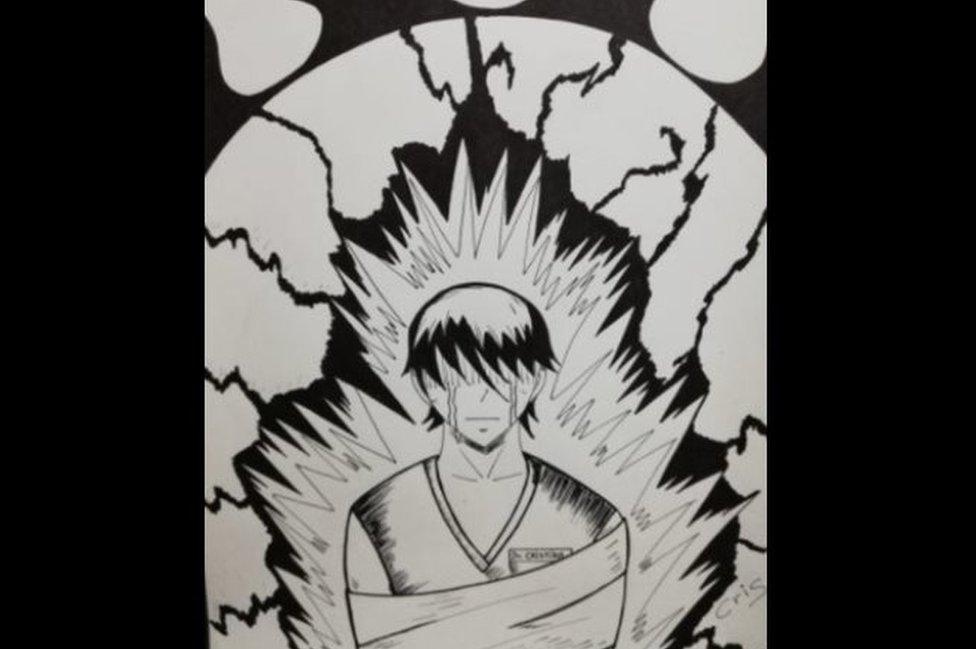
Cristian Crisóstomo has been working on the front line as a doctor.
"Living with depression during lockdown is not easy," he says.
"Some days are really hard for me. There are days with fear and darkness.
"But I have to be strong."

'Life continued on without you'
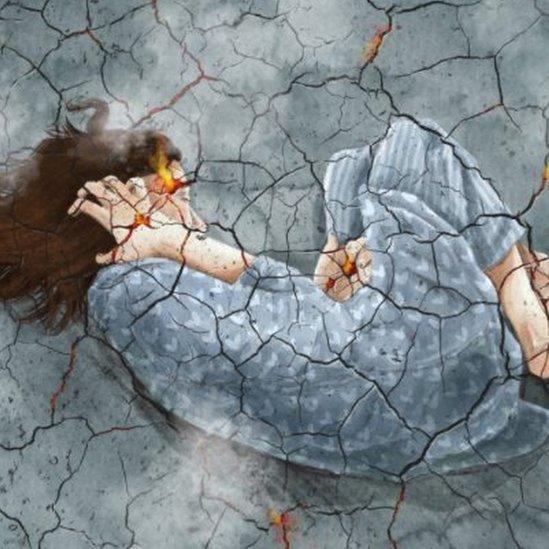
Amanda Francey has myalgic encephalomyelitis (ME).
"Lockdown was already my normal," she says.
"Imagine if you were the only person you knew in lockdown while the whole world remained open and life continued on without you. You're excluded from your family and friends on a daily basis.
"Now imagine on top of this, you are feeling incredibly ill, so ill you can't bear noise, light, touch or stimulation of any kind.
"Imagine not only being trapped inside your home but inside your broken body, year after year, watching your life pass by, knowing restrictions aren't going to be lifted in the foreseeable future."

'Rapid changes in mood'
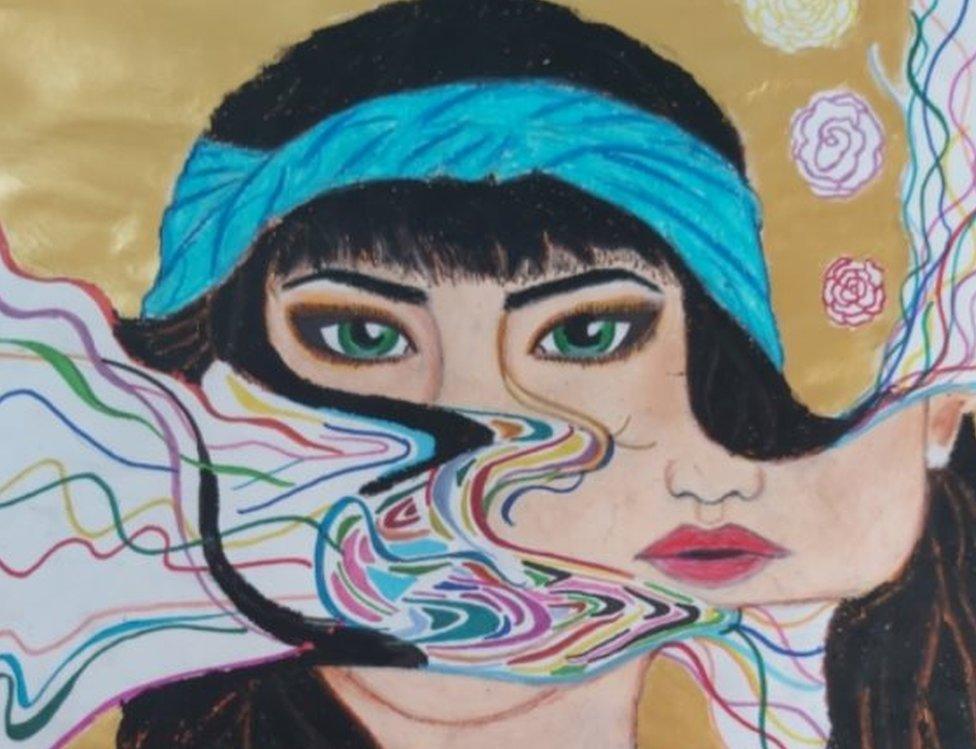
Siyona Bhandari is a visual artist and her drawing expressed how the fluctuations in blood sugar can cause rapid changes in mood and increases irritability in a diabetic person.
Stress can make managing diabetes more difficult and cause blood sugar levels to go too high.
Lockdown has been a lengthy period of stress for a lot of people.

'In my heart there is hope'
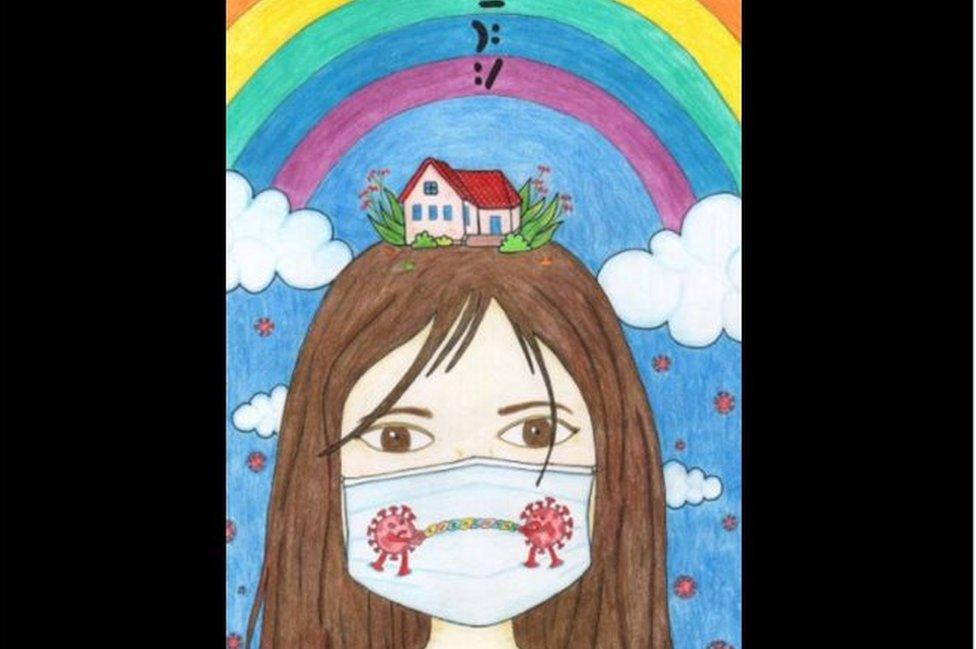
Tri Iva Fitriani says: "Mostly, I feel anxious, unsure, sad, mad, tired, empty, lonely, all mixed up.
"But, I still believe, deep inside in my heart there is hope."

'Locked in a cage'
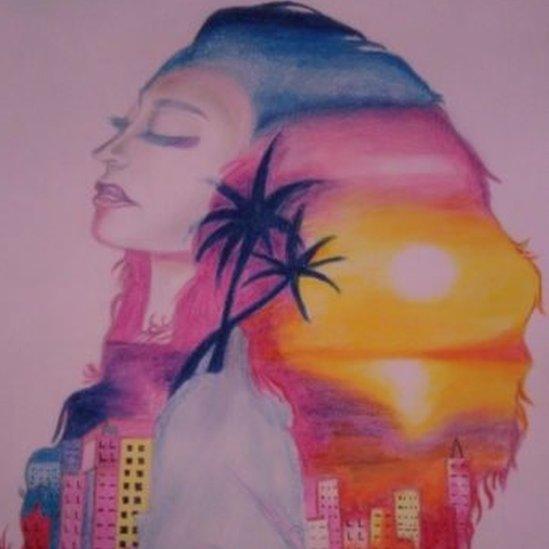
Ahanjit Biswas, who has depression, says: "As she [the woman in the image] can't go out for the lockdown and enjoy the world, she thinks about the sunset, beach, tall buildings.
"It shows that we are also locked in a cage, so we are also thinking about the outer world."

'As lockdown starts to lift...'
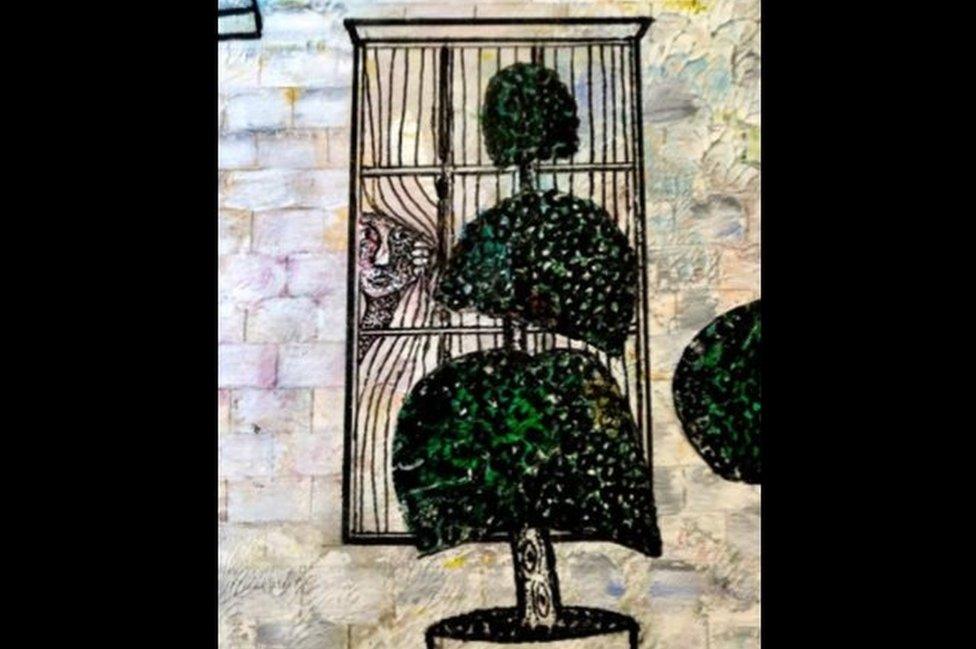
Tumim and Prendergast say: "This detail expresses how many of us who are having to shield are feeling as lockdown starts to lift and there are more people getting back on with their lives."

'Cocooning'
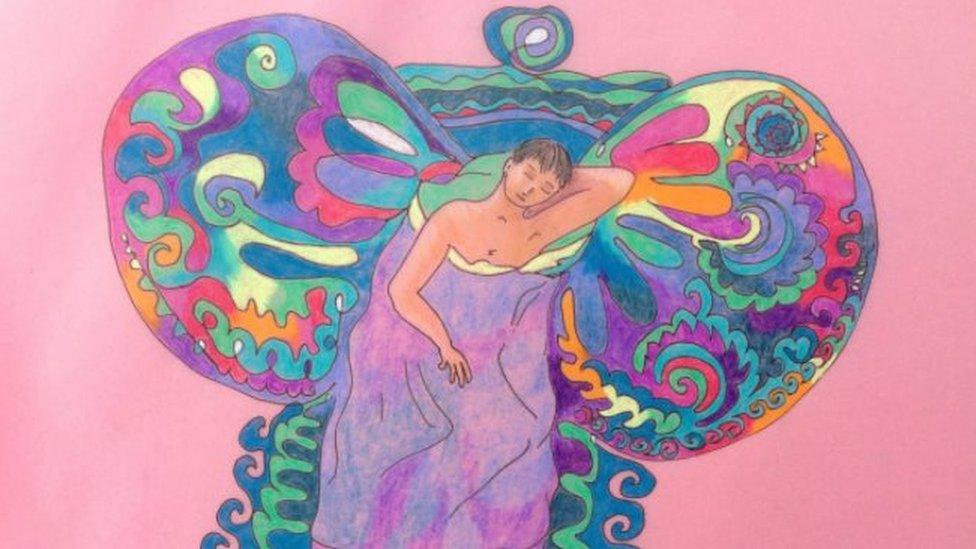
Maria says: "I prefer the idea of being 'cocooned', where other people's kindness and support contributes to the protection of the most vulnerable.
"Cocooning feels far less lonely and becomes a positive image of care."

"I look fine - but I'm not"
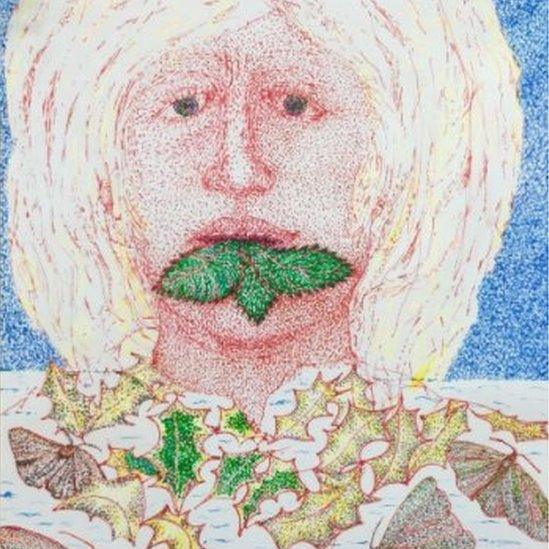
Nettle Mouth, by Matilda Tumim, is about small-fibre sensory neuropathy, which causes severe pain.
"It had been especially bad during lockdown," she says.
"I look fine - but I'm not."

'Prison cell'
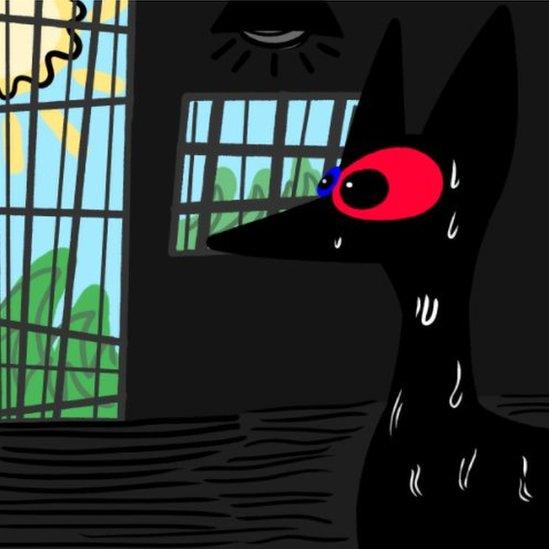
Molly Robson, who has anxiety, says: "The house begins to feel more like a prison cell than a home, after so much time spent there when you're unable to leave - and the general monotony of it all, making little things seem big and scary and things that were once exciting dull and grey."

'Torn between decisions'
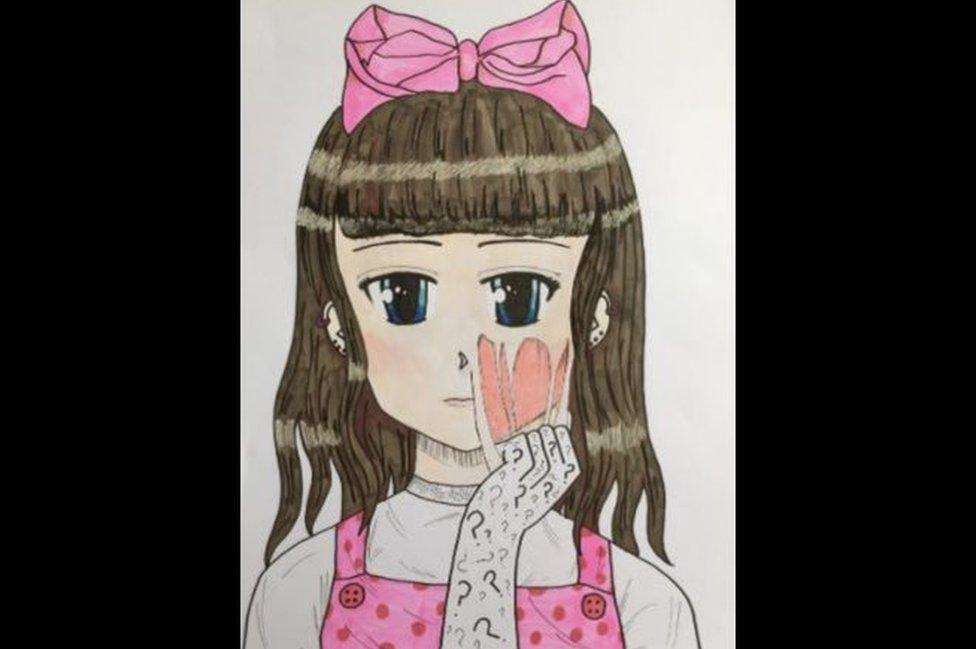
This anonymous artist, who has obsessive-compulsive disorder (OCD), feels "torn between decisions".
"The arm with question marks represents my OCD 'tearing' me up," they say, "torn" between intrusive thoughts around contamination and "repeatedly checking in my head that I definitely did leave enough distance between people".
"Staying inside also makes my OCD bad and is unhealthy, so I'm torn between staying inside and going outside for exercise."

'Flare-up mode'
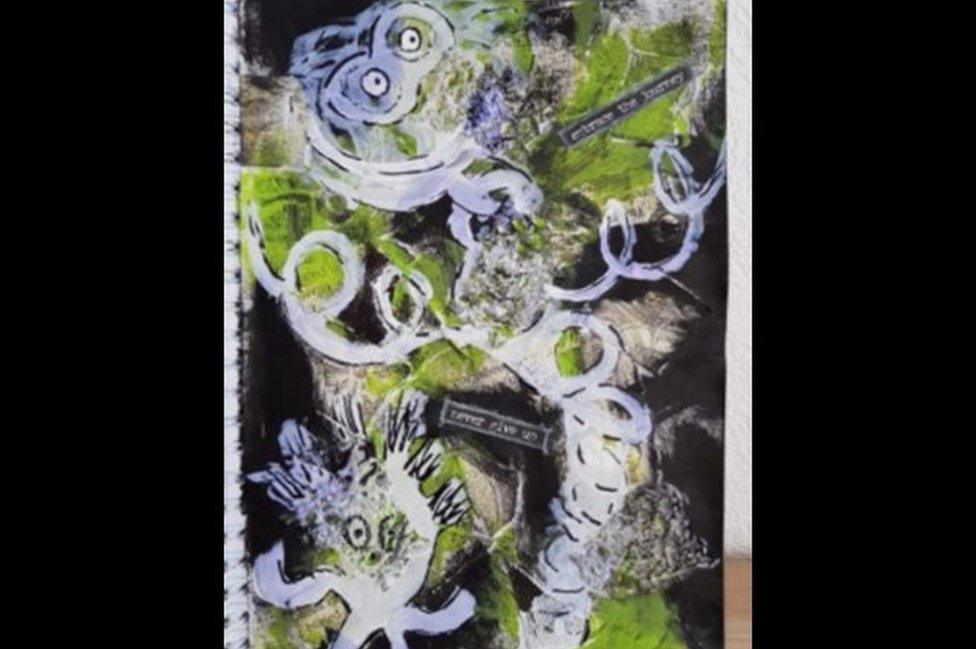
Catherine says living with a chronic illness during lockdown has been "extra hard" physically and mentally.
"I imagine my illness to be like an invisible spring that has tightly entangled itself throughout my whole body, ready to constrict and spring into flare-up mode at any moment," she says.
"The biggest spring-like figure represents this.
"And the little figure is me screaming that the current coronavirus situation just feels like one thing too much."
To find out more about the Drawing Out project click here, external.

For more disability news, follow BBC Ouch on Twitter, external and Facebook, external and subscribe to the weekly podcast on BBC Sounds.
